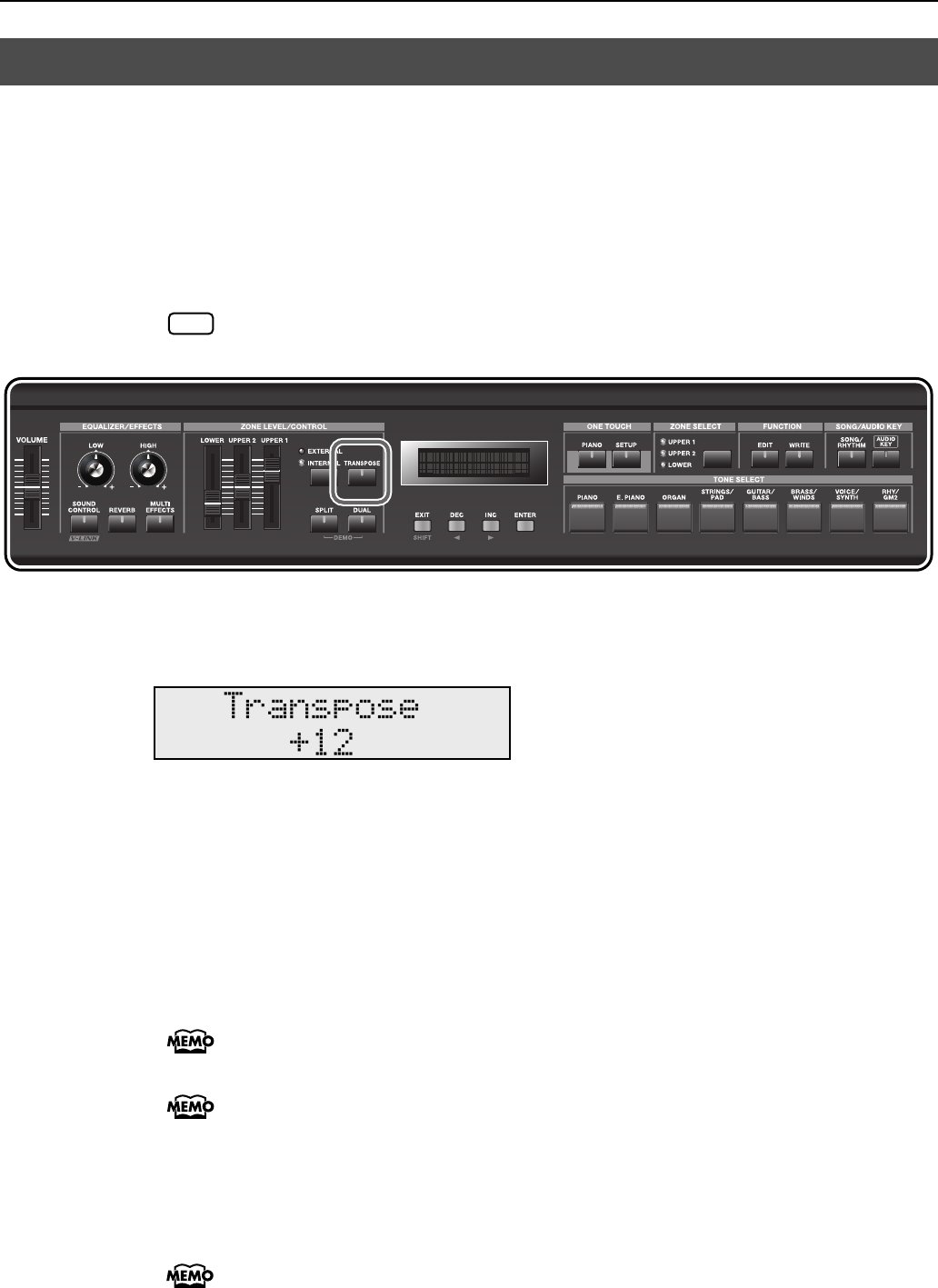
32
Performance
You can transpose performances without changing the keys you are playing, as well as
change the pitch by an octave. This feature is called “Transpose.”
This is a convenient feature to use when you want to match the pitch of the keyboard
performance to a vocalist’s pitch, or perform using the printed music for trumpets or other
transposed instruments.
You can adjust the transpose setting in semitone steps over a range of -48–0–+48
relative to C4.
Note messages from MIDI IN connector will not be transposed.
fig.Q1-22p
1.
Hold down the [TRANSPOSE] button for several seconds.
A screen such as the following appears, and the current value of the setting is displayed.
fig.disp
2.
Hold down the [TRANSPOSE] button and press a key.
For example, to have “E” sound when you play “C” on the keyboard, hold down the
[TRANSPOSE] button and press the E4 key. The degree of transposition then becomes “+4.”
When you release the [TRANSPOSE] button, the previous display will reappear.
When the amount of transposition is set, the Transpose function switches on, and the
[TRANSPOSE] button lights up.
When the transpose value is set to “0,” the button’s indicator will remain dark even if you press
the [TRANSPOSE] button.
You can also transpose by holding down the [TRANSPOSE] button and using the
[DEC] [INC] buttons.
Even when the Transpose function is turned on, the Split Point remains unchanged
(p. 30).
3.
To turn off Transpose, press the [TRANSPOSE] button so that its indicator goes off.
The next time [TRANSPOSE] button is pressed, the sound is transposed by an amount
corresponding to the value set here.
You can set the degree of transposition for each of the Zone individually. For details,
refer to “Setting the Transposition for Each Individual Zone (Transpose)” (p. 70).
Transposing the Key of the Keyboard ([TRANSPOSE] Button)
NOTE
RD-300GX_e.book 32 ページ 2008年2月14日 木曜日 午後1時26分


















